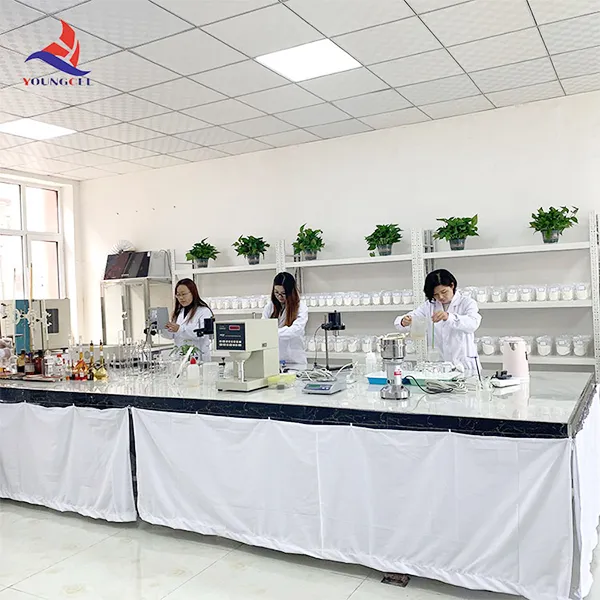Understanding Cellulose The Backbone of Plant Material
Cellulose is a complex carbohydrate, or polysaccharide, that plays a crucial role in the structure and function of plants. It is the most abundant organic polymer on Earth, accounting for approximately 33% of plant matter. This remarkable substance is primarily found in the cell walls of plants, where it provides rigidity and strength. In this article, we will delve into the properties, production, uses, and environmental implications of cellulose as a material.
The Structure and Properties of Cellulose
Cellulose is composed of long chains of glucose units linked by beta-1,4-glycosidic bonds. This linear arrangement allows cellulose molecules to form strong hydrogen bonds with each other, resulting in tightly packed microfibrils that create a robust network. This structure is responsible for the high tensile strength of plant fibers and their resistance to degradation.
One of the remarkable properties of cellulose is its biodegradability. Unlike synthetic materials, cellulose can be broken down by microorganisms in the environment, which helps in reducing pollution and waste. This property makes cellulose a desirable material for various applications, particularly in industries striving for sustainability.
Sources of Cellulose
Cellulose is predominantly derived from plant sources. Major sources include wood, cotton, hemp, flax, and many agricultural residues such as straw and corn stalks. The extraction process typically involves treating these raw materials with chemicals to separate cellulose from hemicellulose, lignin, and other components. The resulting purified cellulose can be processed into various forms, including fibers, films, and powders.
The cellulose obtained from cotton is known for its high purity and is widely used in textile applications. Wood pulp, on the other hand, is utilized in the production of paper and cardboard. As industries seek alternative sources of cellulose, non-wood fibers, such as agricultural residues, are gaining popularity due to their lower environmental impact and sustainability.
Applications of Cellulose
cellulose material

The versatility of cellulose makes it invaluable across a range of industries. One of the most well-known applications is in the textile industry, where cellulose fibers are spun into fabrics such as cotton, rayon, and viscose. These materials are favored for their breathability, softness, and comfort.
In the food industry, cellulose is used as a food additive. It functions as a stabilizer, thickening agent, and dietary fiber, contributing to the texture and nutritional profile of various products. Additionally, cellulose derivatives, like microcrystalline cellulose, are commonly used in pharmaceuticals as excipients and binding agents.
Moreover, cellulose is making significant strides in the field of bioplastics. As the world moves towards reducing reliance on fossil fuels, bio-based materials derived from cellulose are being developed. These bioplastics can be used in packaging, disposable utensils, and other applications, offering the plastic industry more sustainable alternatives.
Environmental Considerations and Future Prospects
The environmental footprint of cellulose is considerably lower than that of conventional petroleum-based materials. Its biodegradability means that products made from cellulose do not contribute to long-term waste in the same way as synthetic plastics. However, sustainable sourcing of cellulose is crucial. Overharvesting of forests can lead to deforestation and loss of biodiversity, hence promoting the use of agricultural waste and dedicated energy crops is essential.
Research into cellulose-based materials continues to grow, with innovations such as nanocellulose gaining attention. This form of cellulose exhibits exceptional mechanical properties and has potential applications in areas like nanocomposites, biomedical devices, and even electronics.
Conclusion
In summary, cellulose is a fundamental component of plant material with a wide range of applications and impressive properties. Its biodegradability and versatility not only offer promising solutions in various industries but also present an opportunity to promote sustainability in the face of growing environmental challenges. As research and technological advancements continue to unveil the potential of cellulose, its role as a key material in the transition towards a more sustainable future is undeniable.
-
Rdp Powder: Key Considerations for Wholesalers in the Building Materials IndustryNewsJul.08,2025
-
Key Considerations for Wholesalers: Navigating the World of Hpmc - Based ProductsNewsJul.08,2025
-
Hpmc Detergent: Key Considerations for WholesalersNewsJul.08,2025
-
Key Considerations for Wholesalers: China Hpmc For Tile Adhesive, Coating Additives, Concrete Additives, and MoreNewsJul.08,2025
-
Crucial Considerations for Wholesalers: Navigating the World of Construction MaterialsNewsJul.08,2025
-
Key Considerations for Wholesalers Sourcing Additive For Cement, Additive For Concrete, Additive For Putty from Additive Manufacturer Shijiazhuang Gaocheng District Yongfeng Cellulose Co., Ltd.NewsJul.08,2025




